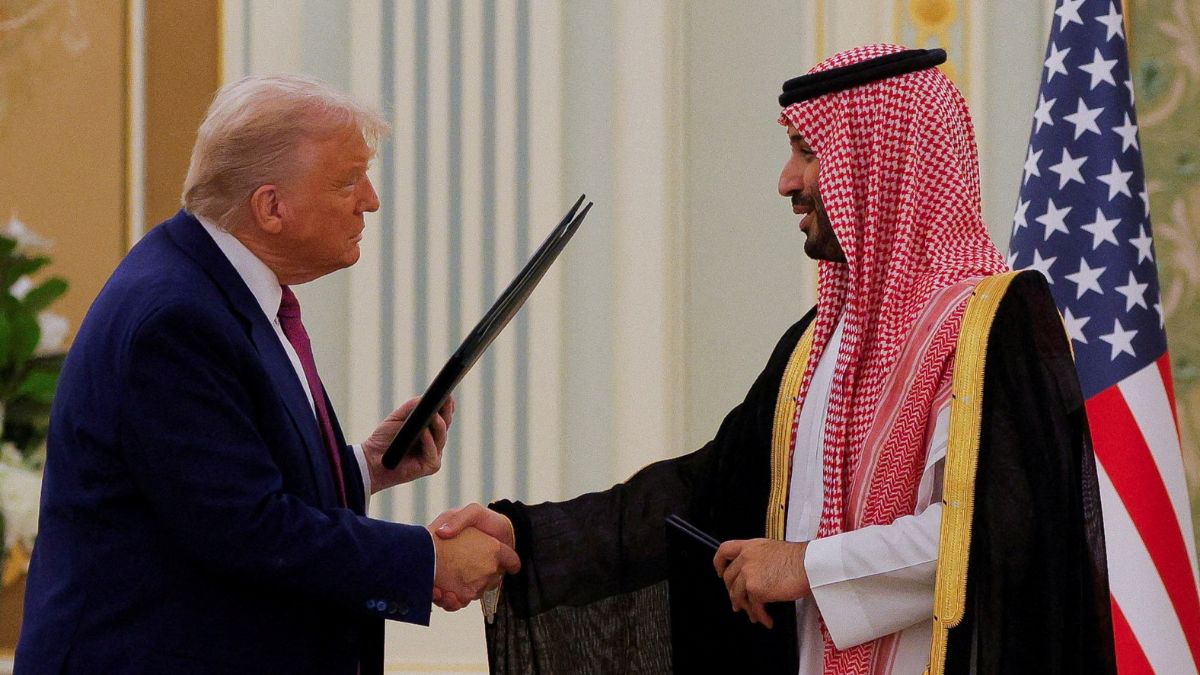The United States and Saudi Arabia have announced a colossal defence agreement worth nearly $142 billion — a deal the White House has hailed as “the largest defence cooperation agreement in US history.”
The agreement signals a deepening of bilateral ties and includes wide-ranging defence sales, military training programs, technological upgrades and broader investment commitments.
The $142 billion defence agreement was unveiled as part of a broader $600 billion Saudi pledge to invest in various sectors of the US economy, spanning defence, technology, artificial intelligence and infrastructure.
The announcement came during US President Donald Trump’s high-profile diplomatic tour to the region, where he met with Crown Prince and Prime Minister Mohammed bin Salman and other senior Saudi officials.
According to a White House statement, “The deals celebrated today are historic and transformative for both countries and represent a new golden era of partnership between the United States and Saudi Arabia.”
The deal encompasses contracts with over a dozen American defence firms and is intended to bolster Saudi Arabia’s national security capabilities through access to US-made advanced warfighting technology and associated services.
The defence agreement is a central component of what the administration called “a joint vision for long-term prosperity and employment opportunities in both nations.”
What the US-Saudi Arabia $142 billion defence deal comprises
The White House confirmed that the arms package is organised into five primary areas of focus, each designed to strengthen a specific segment of Saudi Arabia’s defence infrastructure:
Air Force and Space capabilities: This includes the delivery of next-generation aviation technology to modernise the Royal Saudi Air Force.
Air and missile defence: Aimed at protecting the Kingdom from regional threats, the deals likely involve upgrades to systems like the Patriot missile defence network, a longstanding Saudi interest.
Maritime and coastal security: Agreements will support Saudi naval operations and maritime infrastructure.
Land Forces modernisation and border security: These contracts are geared toward enhancing surveillance, mobility, and capability of Saudi ground forces.
Information and communication systems: This category focuses on cybersecurity enhancements, secure communications, and digital command infrastructure.
In addition to physical equipment, the package also comprises comprehensive training services.
According to the White House, this includes “enhancement of Saudi service academies and military medical services,” indicating a long-term investment in professionalising the Saudi military establishment.
David Des Roches, a professor at the Near East South Asia Center for Security Studies, told Breaking Defense that the deal will likely reinforce the Kingdom’s air defence capabilities, including updated launchers and possibly radar systems.
He said, “They just need a lot of missiles and they need new launchers.”
Also Watch:
The announcement was made during a VIP gathering at the Saudi Royal Court, attended by an influential group of US business leaders.
These included Tesla CEO Elon Musk, who currently heads the administration’s Department of Government Efficiency (Doge); OpenAI CEO Sam Altman; Blackstone Group CEO Stephen Schwarzman; BlackRock CEO Larry Fink; and Nvidia CEO Jensen Huang, among others.
HRH Crown Prince Mohammed bin Salman and President Donald J. Trump with Saudi and US investors.#SaudiUSForum2025 pic.twitter.com/u8OfZhoh7O
— Foreign Ministry 🇸🇦 (@KSAmofaEN) May 13, 2025
Musk’s presence was particularly notable given his earlier statement that he would scale back his role in the Doge from May onward. However, his attendance signals continued engagement in the administration’s economic diplomacy.
Trump hailed the occasion as a reaffirmation of a powerful alliance. Speaking at the forum, he said: “Today, we reaffirm the bond and take the next steps to make our relationship closer, stronger, more powerful than ever before . . . And it will remain that way.”
On Saudi leadership, he remarked, “He’s an incredible man, I’ve known him a long time now. There’s nobody like him.”
Beyond defence: Overall a $600 billion investment
Beyond defence, the broader US-Saudi cooperation framework includes extensive economic and technological commitments. The $600 billion investment plan, touted by both parties, includes over $300 billion worth of deals announced during the Riyadh forum alone.
Saudi Crown Prince Mohammed bin Salman stated, “We are working on partnership opportunities with the US worth $600bn, including agreements of more than $300bn announced today during this forum.”
Also Watch:
This initiative includes a monumental move by Humain, a newly created Saudi state-owned AI firm, which plans to build a massive artificial intelligence infrastructure using hundreds of thousands of Nvidia’s most advanced AI chips over the next five years.
According to Nvidia, 18,000 “Blackwell” AI servers will be deployed in the initial phase. With each chip priced between $30,000 to $40,000, the investment is projected to run into multiple billions of dollars, making it one of the largest known state purchases of AI hardware to date, reported The Financial Times.
In a parallel commitment, AMD will co-invest up to $10 billion with Humain to install its own chip-based AI systems in Saudi Arabia. Amazon has also pledged $5 billion for cloud and data centre infrastructure in the Kingdom.
These moves signify Saudi Arabia’s ambition to become a global hub for “sovereign AI,” with strategic support from leading US tech firms.
Deals amid regional shifts
The defence deal comes at a time when Saudi Arabia remains the United States’ largest Foreign Military Sales (FMS) partner, with active cases worth over $129 billion.
The new $142 billion agreement is seen as a continuation of that legacy, with more integrated cooperation on defence supply chains, technology transfer and logistics.
According to the White House, “The agreement opens the door for expanded US defence industry participation and long-term sustainment partnerships with Saudi entities.”
Alongside the defence and economic discussions, Trump also announced the lifting of US sanctions on Syria, citing support for “a new government that will hopefully succeed in stabilising the country and keeping peace.”
He added that he would be meeting Syria’s new president, Ahmed al-Shara, during his stay in Saudi Arabia.
Also Watch:
With inputs from agencies


)

)
)
)
)
)
)
)
)



